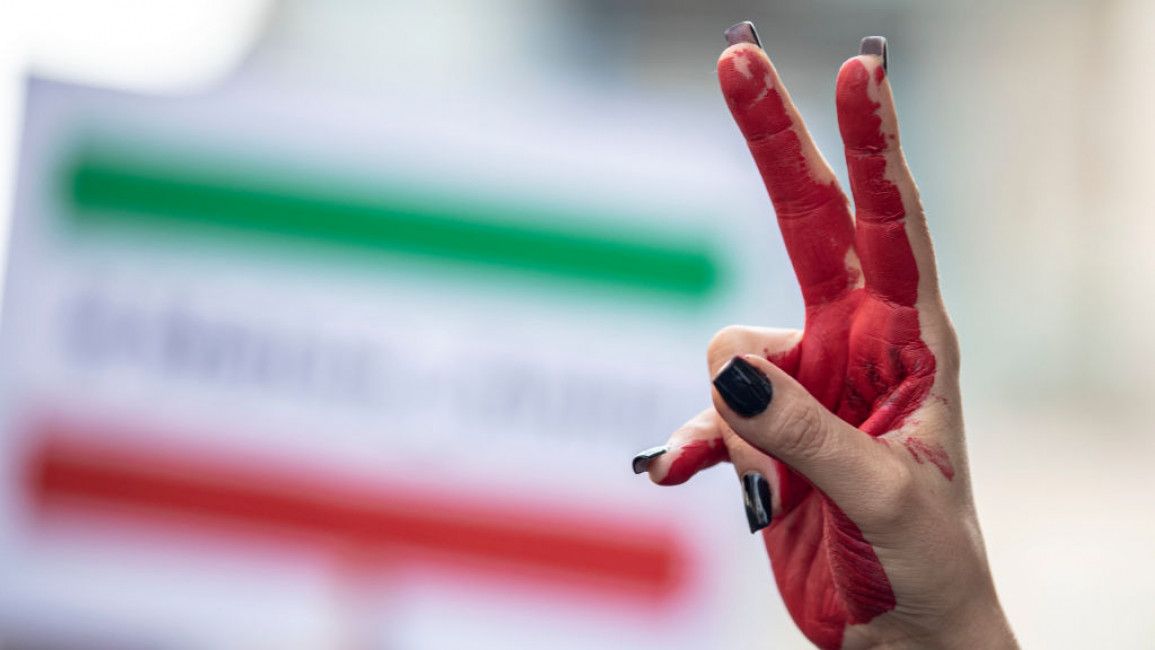Iran: Gunfire at protests over Mahsa Amini's death
Gunshots were fired as Iranian security forces confronted protests on Wednesday over Mahsa Amini's death in a crackdown that rights groups say has already cost at least 108 lives with many children among the dead.
The chants of protesters were interrupted by the crack of gunfire in the cities of Isfahan and Karaj and in Amini's hometown Saqez, in videos shared by two Norway-based human rights organisations.
"Death to the dictator," shouted female students who had defiantly taken off their mandatory hijab headscarves as they marched down a Tehran street, in a video verified by AFP.
Shots were heard in Isfahan amid the "nationwide protests and strikes", Iran Human Rights (IHR) said of a video it tweeted, and in Saqez, according to the Kurdish rights group Hengaw, which reported that later "the security forces fled".
Amini, a 22-year-old Kurdish woman, died on 16 September after falling into a coma following her arrest in Tehran by the notorious morality police for allegedly wearing her hijab 'incorrectly'.
Amini's Kurdish name can be spelt "Jina" or "Zhina".
Young women, university students and even schoolgirls have since taken off their hijabs and faced off with security forces in the biggest wave of social unrest to grip Iran in almost three years.
At least 28 children have been killed and hundreds more detained and held mostly in adult prisons, rights groups said.
Deadly unrest has rocked especially Sanandaj in Amini's western home province of Kurdistan – but also Zahedan in Iran's far southeast, where demonstrations erupted on 30 September over the alleged rape of a teenage girl by a police commander.
Supreme Leader Ayatollah Ali Khamenei on Wednesday again accused Iran's "enemies" of stoking "street riots".
"The actions of the enemy, such as propaganda, trying to influence minds, creating excitement, encouraging and even teaching the manufacture of incendiary devices are now completely clear," he said.
'Bloody crackdown' feared
Activists in Tehran called for protesters to turn out "in solidarity with the people of Sanandaj and the heroic people of Zahedan".
"We don't want spectators. Come and join us," sang a group of mainly young women outside Tehran's Azad University, in IHR footage verified by AFP.
The protest slogan "Woman, Life, Freedom" was spray-painted on the wall of the former US embassy – abandoned in the wake of the 1979 Islamic Revolution and subsequent hostage crisis – but later painted over, an image obtained by AFP showed.
A man who asked not to be identified told the BBC: "The atmosphere is quite tense and yet it is exciting. People are hopeful this time and we hope that a real change is just around the corner. I don't think people are willing to give up this time.
"You can hear some sort of protest everywhere, almost every night. That feels good, that feels really good."
IHR said the security forces had so far killed at least 108 people, and at least another 93 people in Zahedan, while warning of an "impending bloody crackdown" in Kurdistan.
It also said workers had joined protest strikes this week at the Asalouyeh petrochemical plant in the southwest, Abadan in the west and Bushehr in the south.
In its widening crackdown, Iran has blocked access to social media, including Instagram and WhatsApp, and launched a campaign of mass arrests.
Although the outcome of the current wave of #IranProtests - which were sparked by the death in custody of #MahsaAmini/#ZhinaAmini - is yet to be seen, many have said that a turning point has been reached. @MSpanoudi reports ⬇ https://t.co/2hL9ovA6kZ
— The New Arab (@The_NewArab) October 12, 2022
Online monitor NetBlocks on Twitter reported a "major disruption to internet traffic" on Wednesday which was "likely to further limit the free flow of information".
Missing children
EU countries on Wednesday agreed sanctions on Iran following the protest crackdown, after European Commission chief Ursula von der Leyen said it was "time to sanction those responsible" in Iran "for the repression of women".
The Tehran-based Children's Rights Protection Society, which reported the deaths of 28 minors, condemned security forces for violence against children.
It criticised "families being kept in the dark on their children's whereabouts, cases proceeding without lawyers and a lack of children's judges and police", and said the government must be held accountable.
Revolutionary Guards deputy commander Ali Fadavi told Iranian media on 5 October that the "average age of the detainees from many of the recent protests was 15".
Human rights lawyer Hassan Raisi said around 300 people between the ages of 12 and 19 were in police custody, some of them in detention centres for adult drug offenders.
Iran's judiciary said more than 100 people had been charged over the protests in Tehran and Hormozgan provinces alone.
An official Iranian forensic investigation found Amini had died of a longstanding illness rather than reported beatings.
Her parents have denied this and filed a complaint against the officers involved.
One of her cousins, living in Iraq, has told AFP she died of "a violent blow to the head".



